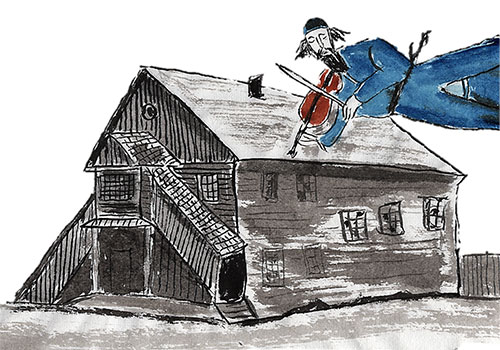Lost Treasures: The Wooden Synagogues of Eastern Europe The Artwork of Bill Farran
Byaroza, Belarus - Sumi-e Style Brush Painting
Byaroza, Belarus - Sumi-e Style Brush Painting
Yiddish: Kartoz-Brezah
The village of Biaroza was first mentioned in 1477. In the 17th century, the village was owned by the Sapieha family, who founded a fortified monastery. The Carthusian order gave its name to the second part of the town's name, Biaroza-Kartuzskaya.
In 1842, a new road was opened between Moscow and Warsaw, passing through the town, and which generated a period of economic prosperity. The Jews' sources of income were the "road" and the Yasolda River. Along the road, caravans of merchandise and mail passed and there were horse-changing stations. This was a source of income to horse traders, horse breeders, and wagon owners. Jews also operated warehouses filled with grain and hay, as well as taverns, restaurants, and inns for travelers.
The Yasolda River was the secondary means of transportation. The area was forested, and in the winter, peasants brought trees they cut down in summer to the riverbanks. With the melting of the snows, they tied the trees into rafts and floated them downriver to Danzig. The wood trade was entirely in the hands of Jews.
The Red Army captured Biaroza in 1939 and made it part of the Belarusian SSR. Following the outbreak of war with the Soviets, the Germans seized the town and occupied it until July 15, 1944, when it was liberated by Red Army troops. During the war, more than 8,000 people were killed in mass executions or starved to death.
Purchase a print
Sumi-e Style Brush Prints are 8x10 inches, in an 11x14 matte.
